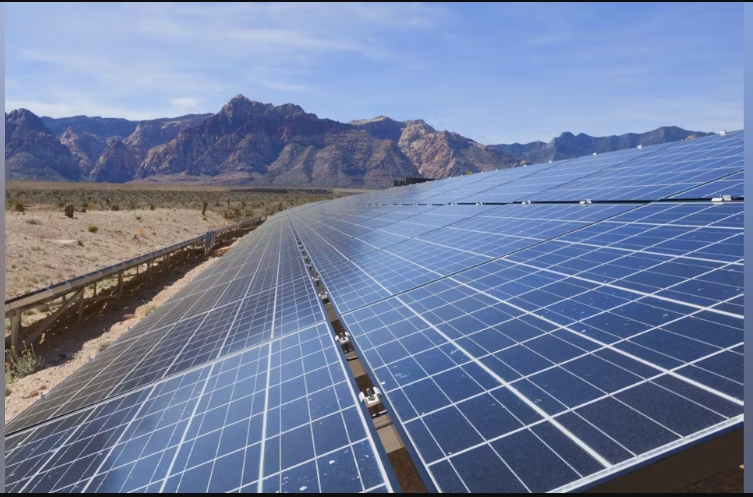The Urgency Behind Community Microgrids
Earlier this year, California faced a devastating wave of wildfires including the Palisades and Eaton Fires that swept through Southern California in January 2025. Fueled by drought and relentless Santa Ana winds, these fires burned over 57,000 acres, destroyed more than 18,000 structures, caused at least 30 fatalities, and forced the evacuation of about 200,000 residents. During these emergencies, more than 400,000 Southern California Edison customers and nearly 50,000 in the Los Angeles area lost power, either from direct fire damage or precautionary Public Safety Power Shutoff (PSPS) events. For many, outages lasted days or even weeks, impacting everything from access to healthcare and safe drinking water to the ability to store food and medications.
While PSPS events are intended to prevent wildfires, they come with their own heavy costs, plunging whole neighborhoods into darkness, isolating vulnerable residents, and putting lives at risk. When people depend on electricity for medical equipment, refrigeration, or reliable communication, a blackout during a wildfire becomes its own public health emergency.
Recognizing these risks, California is investing in resilience at the community level. In late March 2025, Pacific Gas & Electric announced a $43 million investment in its Microgrid Incentive Program. This round of funding supports nine new community microgrid projects in Humboldt, Lake, and Marin counties, serving about 9,000 customers, including four tribal communities. These microgrids are designed to operate independently for at least 24 hours during grid outages, all while keeping emissions at or below current grid levels. The state’s broader goal is to strengthen energy resilience in regions that face some of the greatest threats from wildfires and outages.
Why This Matters
- Resilience Where It Counts
The new microgrids will help ensure that critical services like hospitals, gas stations, water systems, grocery stores, emergency shelters, and homes stay powered during wildfires or other emergencies. For people with limited mobility, seniors, or those who don’t speak English as a first language, reliable electricity can mean the difference between safety and crisis. - Tailored Technology Solutions
California is not taking a one-size-fits-all approach. Each project uses a unique combination of technologies, solar and batteries, pumped hydro, micro-hydro, biomass, or battery-only systems, so that every community can choose what works best for their needs and environment. - Strengthening Tribal Autonomy
Four tribal-led microgrid projects are part of this funding round. For these communities, resilient energy means more than just backup power. It represents increased sovereignty, economic opportunity, and a foundation for long-term sustainability. - Mitigating the Impacts of PSPS
As PG&E continues to use PSPS events to help prevent wildfires, these new microgrids will provide a local solution to power loss. By keeping critical infrastructure running, they reduce the economic, social, and health consequences of broad power shutoffs.
Success in Action: Blue Lake Rancheria
A leading example is the Blue Lake Rancheria Tribe’s microgrid in Humboldt County. Their system includes 420 kW of solar panels and 950 kWh of battery storage, enabling the entire site to run off-grid when needed. This microgrid reliably powers tribal offices, emergency centers, gas stations, a casino, hotel, EV charging stations, and even public parks. During one significant PSPS event, Blue Lake Rancheria’s microgrid provided electricity for over 10,000 people, supporting medical needs, water, food, and communication. The system also saves the tribe about $200,000 each year and eliminates roughly 200 metric tons of carbon emissions annually.
What Comes Next
Communities planning to follow these examples should start by reviewing PG&E and California Public Utilities Commission guidelines to see if they qualify for upcoming grants. Collaboration with PG&E Resilience Coordinators will help align technical and community needs. Early feasibility studies and detailed planning will position local governments, tribes, and other groups to secure state funding and accelerate their projects. Construction and commissioning are expected to proceed over the next two years, aiming to make these microgrids operational in time for future wildfire seasons.
Sources
- PG&E will provide $43 million for nine new community microgrids in Northern California (investor.pgecorp.com, pge.com)
- California Microgrid Incentive Program details and funding scope (pge.com)
- PG&E microgrid awards and tribal inclusion (investor.pgecorp.com)
- Technology diversity on solar, hydro, biomass, and storage (investor.pgecorp.com)
- Blue Lake Rancheria technical data, benefits, and resilience case studies (bicmagazine.com)
- Southern California wildfire impact and PSPS news (Los Angeles Times, ABC News, and major news outlets, Jan 2025)


Recent Comments